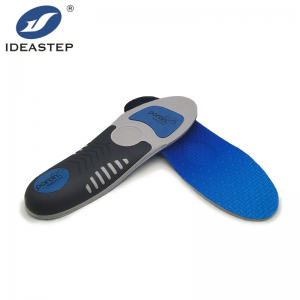
Different materials are added to the sports insole to improve its performance, such as shell, fabric, mid-level material, Poron, etc. What’s the use of these materials?
– Shell
The shell material in an insole typically provides structural support and stability. It helps to maintain the shape of the insole and supports the foot’s arch, preventing excessive pronation or supination during movement. This rigid component can also distribute pressure evenly across the foot, reducing the risk of discomfort and injury.
– Fabric
Fabric materials in insoles often serve multiple functions. They can provide moisture-wicking properties, helping to manage sweat and keep the feet dry during physical activity. Additionally, fabric can contribute to overall comfort, reducing friction and preventing blisters. Some fabrics may also be treated with antimicrobial agents to control odor and prevent the growth of bacteria and fungi.
– Poron
Poron is a high-performance urethane material known for its shock-absorbing properties. When used in insoles, Poron can effectively cushion the foot, absorb impact forces, and provide long-lasting comfort. It also has resilient characteristics, allowing it to bounce back to its original shape after compression, contributing to durable cushioning.
– Middle Layer
The middle layer of an insole often acts as the primary cushioning component. Materials like EVA foam or gel are commonly used in this layer to provide ample shock absorption, reducing the strain on the feet, ankles, and legs during high-impact activities. This layer may also contribute to energy return, enhancing propulsion and overall performance.
Each of these materials plays a vital role in enhancing the comfort, support, and performance of the insole, working together to provide a balanced and effective solution for individuals engaged in sports and physical activities.
Expand more related content: https://www.aideastep.com/sports-insoles/.
